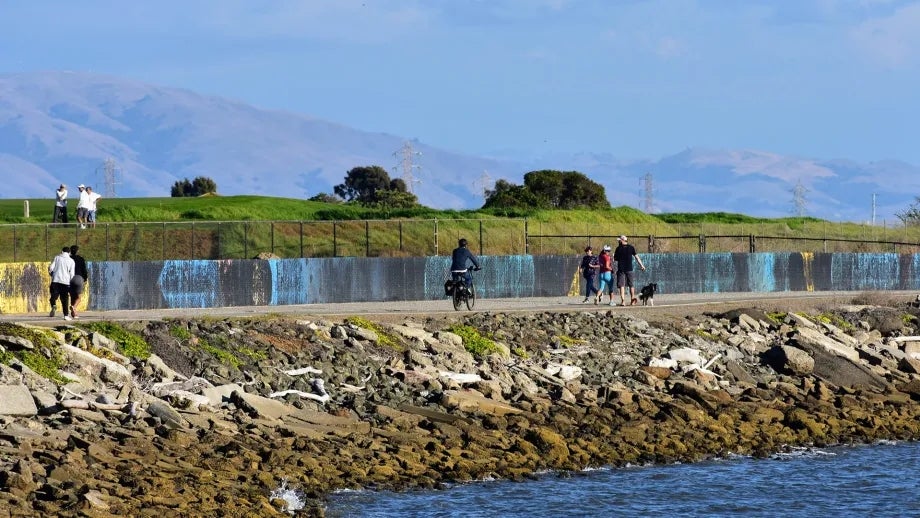Bay Trail Gap Closure Implementation Plan
The Bay Trail Gap Closure Implementation Plan (BTGCIP) sets priorities for future work to complete the vision of a 500-mile Bay Trail network around the bay.
In 2005, MTC and the Association of Bay Area Governments conducted an evaluation of the Bay Trail network, The San Francisco Bay Trail Project Gap Analysis Study. This study identified gaps in the Bay Trail network, scored and prioritized them, developed cost estimates for future construction, and presented an overall timeframe for completion of the full 500-mile vision of the Bay Trail.
Goals
The purpose of the BTGCIP is to build upon the work from 2005 to identify and evaluate existing missing segments of Bay Trail (trail gaps) and prioritize their construction in the remaining build-out of the Bay Trail. Expanding Bay Trail access to Equity Priority Communities is key to the success of this project.
Priorities
- Center Equity Priority Communities in building out future segments of the Bay Trail
- Develop connections to parks and open space (e.g., Bay Area Ridge Trail, Water Trail, etc.)
- Provide access to transit and active transportation infrastructure (e.g., bike share)
- Preserve the shoreline environment
- Adapt to climate change and sea level rise
- Create a comfortable and convenient user experience
Challenges
In general, the remaining segments are the most complicated due to a variety of factors such as: limited right-of-way, environmental barriers, conflicts with existing utilities and other structures, and/or boundaries that require interjurisdictional coordination.
Staff Contact
Lily Brown, Associate Planner/Analyst ‐ Equitable and Active Transportation
Phone: 415-778-6721
Email: lbrown@bayareametro.gov
The BTGCIP kicked off in July 2022 and is expected to be completed within two years. Project deliverables will be posted on this page as they are completed.
Working Group
The BTGCIP engagement included a working group with agency staff and advocates from through the region. The working group has more than 100 participants – staff from cities, counties, state, federal, transit and advocacy organizations – with representation from all nine Bay Area counties.
The first meeting was held on 11/29/22 to review the project overview; provide insight on the barriers for implementing agencies to closing gaps; provide corrections to our Bay Trail base maps and data set; and share input on preferred prioritization criteria. The second meeting was on 9/26/23 to review the gap prioritization methods and results.
Public Engagement
The engagement for the BTGCIP also included partnering with nine community based organizations (CBOs) to engage the public throughout the region:
- Canal Alliance (San Rafael)
- East Oakland Neighborhood Initiative (Oakland)
- El Concilio of San Mateo (East Palo Alto)
- Green Hive (Vallejo)
- Rich City Rides (Richmond)
- San Francisco Bicycle Coalition / San Francisco Parks Alliance / Rafiki Coalition (San Francisco)
The CBOs held nine events throughout the Bay Area with over 200 participants. Two events were held in Spanish, and Spanish translation was available at all events. The engagement events were held in many formats, including: bike rides, tabling at existing community events, zoom meetings, farm gatherings, dinners and picnics.
Participants shared their experiences and desires on how to improve the Bay Trail by closing gaps and with increased maintenance, amenities and programming.

